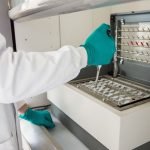Statin Drugs, Cholesterol and Heart Disease: Myth vs. Reality
Dicken Weatherby, ND and Donald R. Yance, MH, CN
The FDA just turned down a large pharmaceutical company’s application to make one of the first statin drugs available without a prescription. The panel that made this decision raised concerns that patients would turn to statin drugs instead of seeking a physician’s care. It’s good news that the FDA isn’t giving the green light to widespread over-the-counter drug use despite the heavy sway of advertising that would have people believe statin drugs are a safe panacea for preventing cardiovascular disease. We know most of you reading this already understand the misinformation being foisted on the public regarding statin drugs, but we’d like to take this opportunity to review some of the myths and realities behind this issue.
Myth 1: High cholesterol (and LDL) is the No. 1 cause of heart disease in this country.
Wrong. High cholesterol is among the risk factors for heart disease, but is not the leading risk factor. The most prevalent risk factor is low HDL along with small LDL particles, which commonly occur together. In fact, of every 100 people with coronary heart disease, 60-70 will have low HDL and small LDL particles, but fewer than 30 will have high LDL. If this is the case, why do we not hear more about low HDL and small LDL particles? The answer is simple: because treating these is not as profitable for drug companies. But just wait – when a profitable drug becomes available to treat this more prevalent risk factor for heart disease, we can expect to hear about an “epidemic” that will justify billions of dollars in new drug expenditures (Gardner et al., 1996; Stampfer et al., 1996; Lamarche et al., 1997; Kuller et al., 2002).
What qualifies as low HDL? National guidelines say it is a level of <40mg/dL for men and <45mg/dL for women (NCEP panel, 2001). In fact, a level of <60mg/dL is probably very significant (Gotto and Brinton, 2004). HDL is already a standard measure in everyday cholesterol panels. Small LDL particles, on the other hand, need to be measured specifically. The medical world focuses on statin therapy for LDL, while the most prevalent risk factor for heart disease goes untreated in the great majority of cases.
Myth 2: If I take a statin agent, I won’t have a heart attack.
This is simply untrue. Lowering cholesterol to optimal levels reduces, but does not eliminate, the risk of heart attacks. Many heart attacks still occur in people with low cholesterol levels, whether or not they take cholesterol-lowering drugs (van Lennep et al., 2000). We must consider that there are other risk factors for heart disease besides cholesterol, such as small LDL particles, low HDL, high fibrinogen, high homocysteine and high insulin levels. Results from the most recent National Health and Nutritional Survey show that 47 million U.S. adults have metabolic syndrome, which substantially heightens the risk of heart disease even in the presence of low cholesterol levels (Ford et al., 2002).
Myth 3: I feel fine and my stress test was normal. My doctor says I don’t have heart disease.
This is among the most widely propagated fallacies spread by many primary care physicians and even cardiologists. First, lack of symptoms should not be reassuring, as most heart disease is silent – without symptoms and undetectable by conventional means such as electrocardiograms and cholesterol testing. Second, stress testing is a miserable failure for screening asymptomatic people. Most future deaths and heart attacks, in fact, occur in people with normal stress tests (when symptoms are not present). The net result of this misperception is that most future heart-attack victims are walking around feeling fine and unaware of their risk (Taylor et al., 2003). Cholesterol can be high, low or in between, but all too frequently fails to shed light on this murky situation.
Cholesterol: The Lipid With a Bad Reputation
Hyperlipidemia refers to elevated blood levels of lipids, including cholesterol and triglycerides. Most people with hyperlipidemia have no symptoms. However, hyperlipidemia is a contributing factor associated with an increased risk of coronary heart disease (CHD). CHD, in turn, can result in angina pectoris (chest pain), a heart attack or both. Although hyperlipidemia is considered a risk factor to heart disease, it is one of many risk factors and what actually causes hyperlipidemia is a debatable issue. It is not as simple as suggesting that foods containing cholesterol elevate lipids.
Another important risk factor that has been largely overlooked is the oxidation of LDL cholesterol caused from a lack of antioxidant-rich foods, herbs and nutrients and/or a large intake of foods and chemicals that contain damaging free radicals. Chronic inflammation also contributes to oxidative stress and an increase in CHD. When LDL cholesterol oxidizes, it promotes atherosclerosis by a process referred to as the macrophage-foam cell mechanism, particularly in the presence of stressors, like cortisol and insulin. Cortisol and insulin together act as a dynamic duo, causing all kinds of disruptions – including an increased oxidative and inflammatory state. These are the real underlying causes to chronic disease. Inflammation is also involved in the process of LDL oxidation and contributes to the development of vascular disease (Rifai and Ridker, 2002; Albert et al., 2002; Bermudez and Ridker, 2002; Schroecksnadel et al., 2006). Ideally, LDL levels should be kept below 120mg/dL, and you should monitor patients for oxidative activity, especially lipid peroxidation.
The production of C-reactive protein (CRP) is an essential part of the inflammatory process, and the measurement of this substance reflects the level of inflammatory activity deep within the body. It appears that certain conditions create a state of excessive inflammation within the circulatory system. High CRP levels are evidence of this type of inflammation (Rifai and Ridker, 2002; Albert et al., 2002; Bermudez and Ridker, 2002; Blake and Ridker, 2001). Ideally, it is best to keep CRP levels below 0.55mg/L in men and 1.5mg/L in women. Please note that these reference ranges refer to the High Sensitivity CRP (or hs-CRP) test.
Multiple risk markers for atherosclerosis and cardiovascular disease act in a synergistic way through inflammatory pathways. Various factors have been identified as risk factors for CHD and arterial damage:
- Elevated CRP
- Elevated LDL
- Excess insulin
- Low HDL
- High glucose
- Nitric oxide deficit
- Excess triglycerides
- Low free testosterone
- Excess fibrinogen
- Excess homocysteine
- Hypertension
- Low vitamin K
- Excess cholesterol.
Many key inflammatory biochemical risk markers exist for cardiovascular disease: in particular, the role of three basic cell types affected by these risk markers (endothelial cells, smooth muscle cells and immune cells); the crucial role of inflammatory mediators; nitric oxide balance in cardiovascular pathology; and the use of nutrients (flavonoids, carotenoids, sterols, vitamins C and E, omega 3 fatty acids, etc.) to circumvent several of these inflammatory pathways. Most of the above risk markers for cardiovascular disease have a pro-inflammatory component that stimulates the release of a number of active molecules, such as inflammatory mediators, reactive oxygen species, nitric oxide and peroxynitrite from endothelial, vascular smooth muscle and immune cells in response to injury. Nitric oxide plays a pivotal role in preventing the progression of atherosclerosis through its ability to induce vasodilation, suppress vascular smooth muscle proliferation and reduce vascular lesion formation. Nutrients such as arginine, antioxidants (Oligomeric proanthocyanidins or OPCs), vitamins C and E, lipoic acid, selenium, glutathione) and enzyme cofactors (vitamins B2, B3, B6, B12, folate, zinc) help to elevate nitric oxide levels and may play an important role in the management of cardiovascular disease. Other dietary components such as DHA/EPA from fish oil, tocotrienols, vitamins B6 and B12, and quercetin contribute further to mitigation of the inflammatory process (Osiecki, 2004).
Within the broad range of cholesterol levels from 180 to 240mg/dL there is little to no evidence that this alone correlates with heart disease. Below 180mg/dL there is increased risk of hemorrhagic stroke, depression and suicide. Above 240mg/dL there is increased risk of cardiovascular disease and ischemic stroke. Above age 70, elevated cholesterol and cardiovascular events no longer correlate. All told, total serum cholesterol alone is a poor indicator of cardiovascular disease. Half of all heart attack patients have normal total cholesterol levels.
So, not only do statin drugs have their inherent drawbacks, but in some ways they are treating a fabricated problem based on misunderstood and misrepresented “research.” As natural healthcare providers, we know that we must be wary of the current cholesterol hysteria, we must be able to explain the real evidence, and we must help our patients understand the facts so they can make educated health choices.
 Dicken Weatherby, ND is based in southern Oregon. A graduate of NCNM, Dicken is co-author of the bestselling book Blood Chemistry and CBC Analysis-Clinical Laboratory Testing from a Functional Perspective. He has self-published seven other books in the field of alternative medical diagnosis, has created numerous information products, and runs a number of successful Web sites (www.BloodChemistryAnalysis.com, www.Health-E-Marketing.com and www.StrawBale.com). He is involved in research, writing and consulting, and teaches functional diagnosis seminars in both the U.S. and his native country, the U.K.
Dicken Weatherby, ND is based in southern Oregon. A graduate of NCNM, Dicken is co-author of the bestselling book Blood Chemistry and CBC Analysis-Clinical Laboratory Testing from a Functional Perspective. He has self-published seven other books in the field of alternative medical diagnosis, has created numerous information products, and runs a number of successful Web sites (www.BloodChemistryAnalysis.com, www.Health-E-Marketing.com and www.StrawBale.com). He is involved in research, writing and consulting, and teaches functional diagnosis seminars in both the U.S. and his native country, the U.K.
 Donald Yance is an internationally known herbalist and nutritionist. He is the founder and medical director of the Centre for Natural Healing in Ashland, Ore. Through extensive research and clinical practice, he has developed his Triphasic system, which forms the cornerstone of his clinical approach. Donald is the founder and formulator of Natura Health Products, and founder and president of The Mederi Foundation, whose programs promote health education and clinical research on the use of natural medicine, with an emphasis in the field of integrative oncology.
Donald Yance is an internationally known herbalist and nutritionist. He is the founder and medical director of the Centre for Natural Healing in Ashland, Ore. Through extensive research and clinical practice, he has developed his Triphasic system, which forms the cornerstone of his clinical approach. Donald is the founder and formulator of Natura Health Products, and founder and president of The Mederi Foundation, whose programs promote health education and clinical research on the use of natural medicine, with an emphasis in the field of integrative oncology.
References
Gardner CD et al: Association of small low-density lipoprotein particles with the incidence of coronary artery disease in men and women, JAMA Sep 18;276(11):875-81, 1996.
Stampfer MJ et al: A prospective study of triglyceride level, low-density lipoprotein particle diameter, and risk of myocardial infarction, JAMA Sep 18;276(11):882-88, 1996.
Lamarche B et al: Small, dense low-density lipoprotein particles as a predictor of the risk of ischemic heart disease in men: Prospective results from the Quebec Cardiovascular Study, Circulation Jan 7;95(1):69-75, 1997.
Kuller L et al: Nuclear magnetic resonance spectroscopy of lipoproteins and risk of coronary heart disease in the cardiovascular health study, Arterioscler Thromb Vasc Biol Jul 1;22(7):1175-80, 2002.
Executive summary of the third report of the national cholesterol education program (NCEP) expert panel on detection, evaluation, and treatment of high blood cholesterol in adults (Adult Treatment Panel III), JAMA May 16;285(19):2486-97, 2001.
Gotto AM, Brinton EA: Assessing low levels of high-density lipoprotein cholesterol as a risk factor in coronary heart disease: a working group report and update, J Am Coll Cardiol Mar 3;43(5):717-24, 2004.
van Lennep JE et al: Apolipoprotein concentrations during treatment and recurrent coronary artery disease events, Arterioscler Thromb Vasc Biol Nov;20(11):2408-13, 2000.
Ford ES et al: Prevalence of the metabolic syndrome among US adults: findings from the third National Health and Nutrition Examination Survey. JAMA Jan 16;287(3)356-9, 2002.
Taylor AJ et al: 34th Bethesda Conference: Can atherosclerosis imaging techniques improve the detection of patients at risk for ischemic heart disease?, J Amer Coll Cardiol Jun 4;(11)41:1860-2, 2003.
Rifai N, Ridker PM: Inflammatory markers and coronary heart disease, Curr Opin Lipidol Aug;13(4):383-9, 2002.
Albert CM et al: Prospective study of C-reactive protein, homocysteine, and plasma lipid levels as predictors of sudden cardiac death, Circulation Jun 4;105, (22):2595-9, 2002.
Bermudez EA, Ridker PM: C-reactive protein, statins, and the primary prevention of atherosclerotic cardiovascular disease, Prev Cardiol Winter;5(1):42-6, 2002.
Schroecksnadel K et al: Crucial role of interferon-gamma and stimulated macrophages in cardiovascular disease, Curr Vasc Pharmacol Jul;4(3):205-13, 2006.
Blake GJ, Ridker PM: Inflammatory mechanisms in atherosclerosis: from laboratory evidence to clinical application, Ital Heart J Nov;2(11):796-800, 2001.
Osiecki H: The role of chronic inflammation in cardiovascular disease and its regulation by nutrients, Altern Med Rev Mar;9(1):32-53, 2004.








